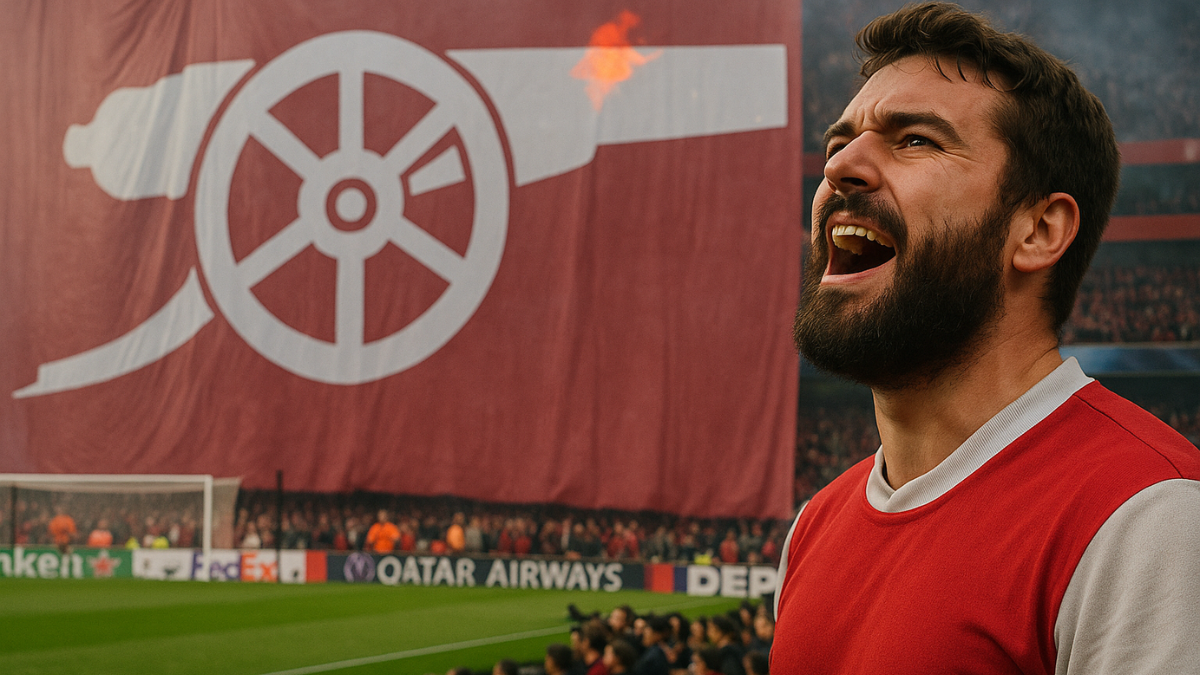
It was billed as one of the biggest nights in Arsenal’s modern history—a Champions League semifinal under the lights at the Emirates. The energy should have crackled. Instead, the air hung awkwardly still, and the moment fans will remember most was not Ousmane Dembélé’s early dagger for PSG, but a tifo that looked like it had been ordered on Temu.
As the teams emerged, the North Bank unveiled a massive red banner featuring a solitary white cannon. Club-branded. Pristine. And completely lifeless. Pyrotechnics lit up around it, but the design—a giant logo on a solid background—landed with a thud.
It was supposed to be Arsenal’s statement to the footballing world. What it became was a lightning rod for ridicule. “It looked like my seven-year-old had done it at school for a project and brought it to the stadium,” former striker Gabriel Agbonlahor scoffed on talkSPORT. “For a semi-final, the club should have done a lot more. It was embarrassing.”
Working as a pundit for Amazon Prime, Wayne Rooney added: “I was a bit disappointed with how they played and the fans as well… Against Madrid they were excellent, but tonight they were subdued. It was almost like an anti-climax.”
For many, the tifo summed up the entire night: emotionally flat, over-managed, and more corporate than communal.
A blocked vision
The banner’s sterility was not entirely by accident. Arsenal supporters had tried to create something else.
The Ashburton Army, a self-organized group of black-clad ultras behind the Clock End, raised over $12,500 in under 24 hours to fund what they called “our biggest ever display.” Their proposed designs—including references to Money Heist and a custom chessboard homage to Real Madrid’s quarterfinal tifo—were never approved. The group later issued refunds and a terse statement: “The club has declined our proposed design.”
Arsenal reportedly cited timing issues between matches, but some fans weren’t buying it. The REDaction Gooners, another fan-led outfit, revealed that their own idea—featuring Bukayo Saka with a Champions League trophy and the caption “Munich Calling”—was also turned away.
In the aftermath, the debate shifted from aesthetic to structural. Many asked why those most invested in creating an atmosphere were not empowered to do so.
Corporate polish vs fan chaos
Northbanksy, a street artist and Arsenal supporter, put it bluntly: “The Arsenal club tifo looked like a giant branded shower curtain—an obvious product of corporate groupthink.” He added that while the Ashburton Army’s mock-ups may not have been perfect, “Arsenal put even less into theirs.”
Others noted how the club had succeeded before—against Real Madrid, for instance, when red-and-white card displays in every section produced an organic, unified spectacle. What changed between rounds wasn’t the fans’ passion, but the process.
“It’s a shame,” said Akhil Vyas of the Arsenal Supporters’ Trust. “You don’t get to the semifinals of the Champions League often. Hopefully there will be learnings.”
In that sense, Arsenal’s tifo controversy is more than just an internet meme or bad design story. It’s a snapshot of what happens when a club forgets that the most powerful visuals on European nights aren’t brand assets—they’re belief, color, noise, and chaos.